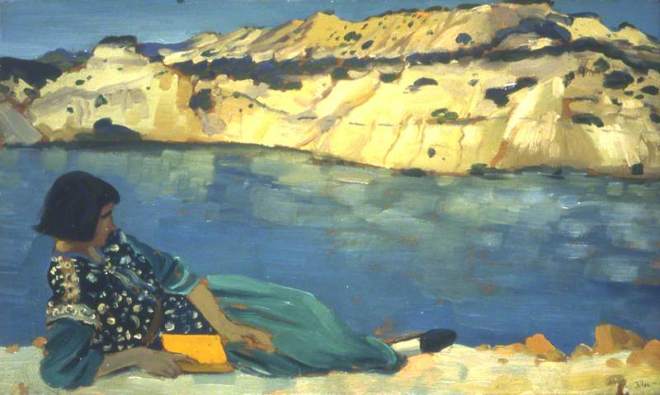 Augustus John The Blue Pool 1911 was painted in Dorset. It’s in Aberdeen. There is nothing to say about this painting except that everything about it is heavenly – Dorelia’s clothes, her haircut, the sea, the feeling of the freshest of fresh air.
Augustus John The Blue Pool 1911 was painted in Dorset. It’s in Aberdeen. There is nothing to say about this painting except that everything about it is heavenly – Dorelia’s clothes, her haircut, the sea, the feeling of the freshest of fresh air.
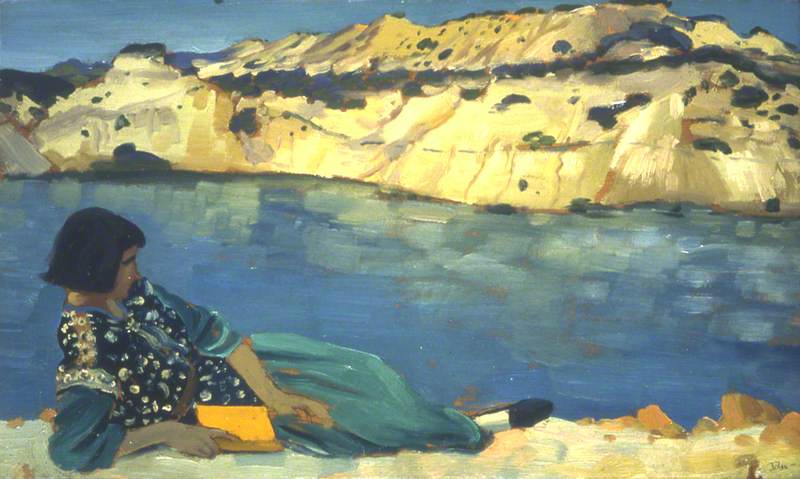

 Augustus John The Blue Pool 1911 was painted in Dorset. It’s in Aberdeen. There is nothing to say about this painting except that everything about it is heavenly – Dorelia’s clothes, her haircut, the sea, the feeling of the freshest of fresh air.
Augustus John The Blue Pool 1911 was painted in Dorset. It’s in Aberdeen. There is nothing to say about this painting except that everything about it is heavenly – Dorelia’s clothes, her haircut, the sea, the feeling of the freshest of fresh air.
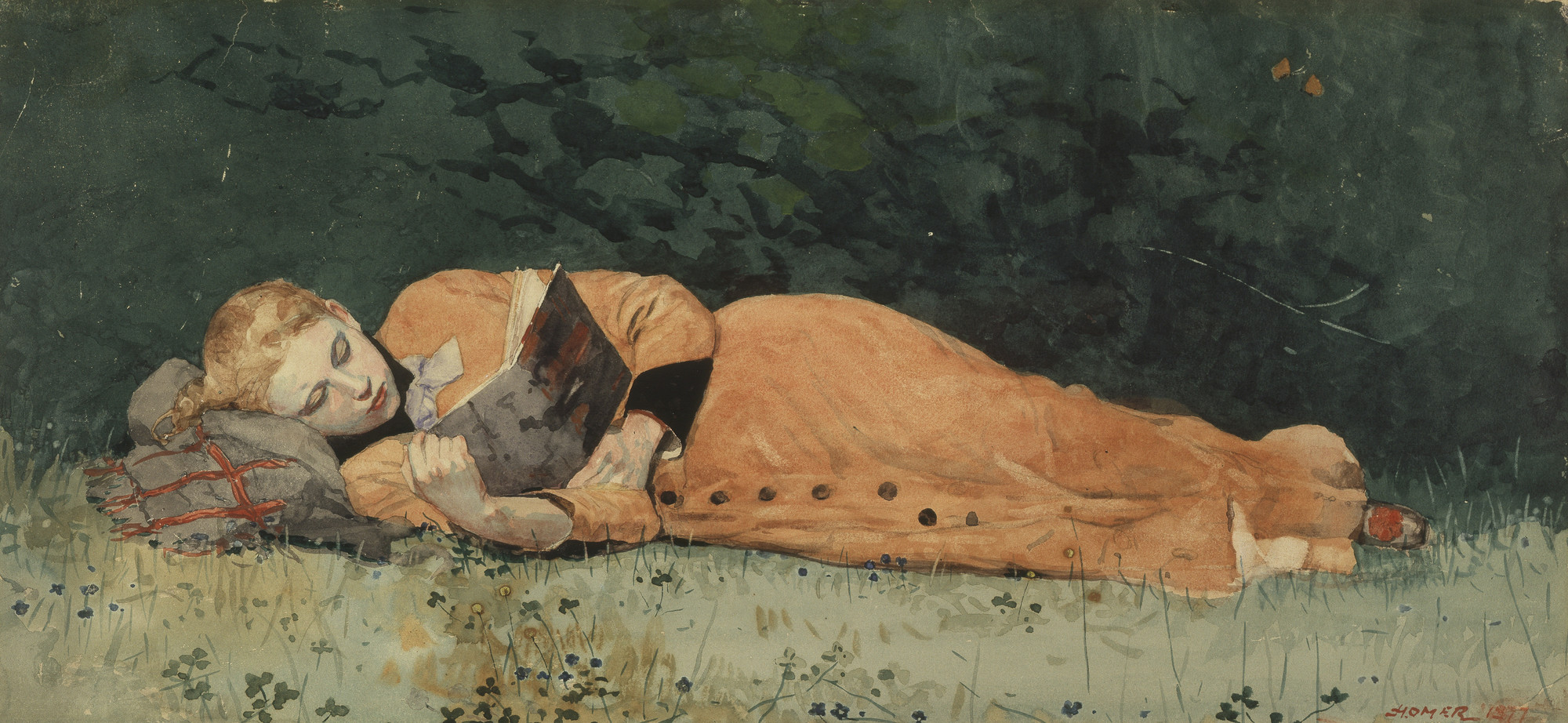
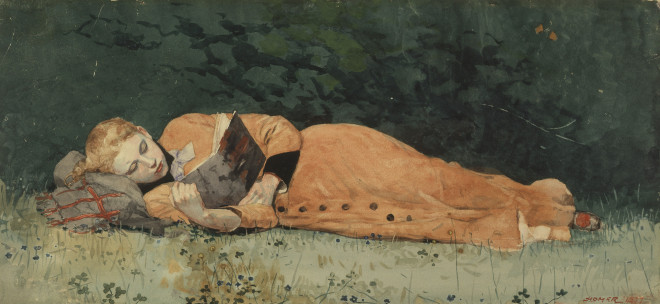 Winslow Homer’s The New Novel (1877) was, and still can be, seen as a moral statement about ‘only a novel’. Here for example is a piece by Book Patrol: ‘The image crackles with latent sexuality and the eroticism of feminine power. It is a deeply intimate portrait, and Homer seems to spying on her, enjoying the scene as a voyeur enraptured by the young girl’s complete lack of self-consciousness. Her foot emerges from her dress, stretched, cat-like, as if the passage she’s reading requires a physical response. Reading here is a pagan act, a mystic rite performed in a sylvan setting that almost begs for fauns spying upon her from within the background brush.’
Winslow Homer’s The New Novel (1877) was, and still can be, seen as a moral statement about ‘only a novel’. Here for example is a piece by Book Patrol: ‘The image crackles with latent sexuality and the eroticism of feminine power. It is a deeply intimate portrait, and Homer seems to spying on her, enjoying the scene as a voyeur enraptured by the young girl’s complete lack of self-consciousness. Her foot emerges from her dress, stretched, cat-like, as if the passage she’s reading requires a physical response. Reading here is a pagan act, a mystic rite performed in a sylvan setting that almost begs for fauns spying upon her from within the background brush.’
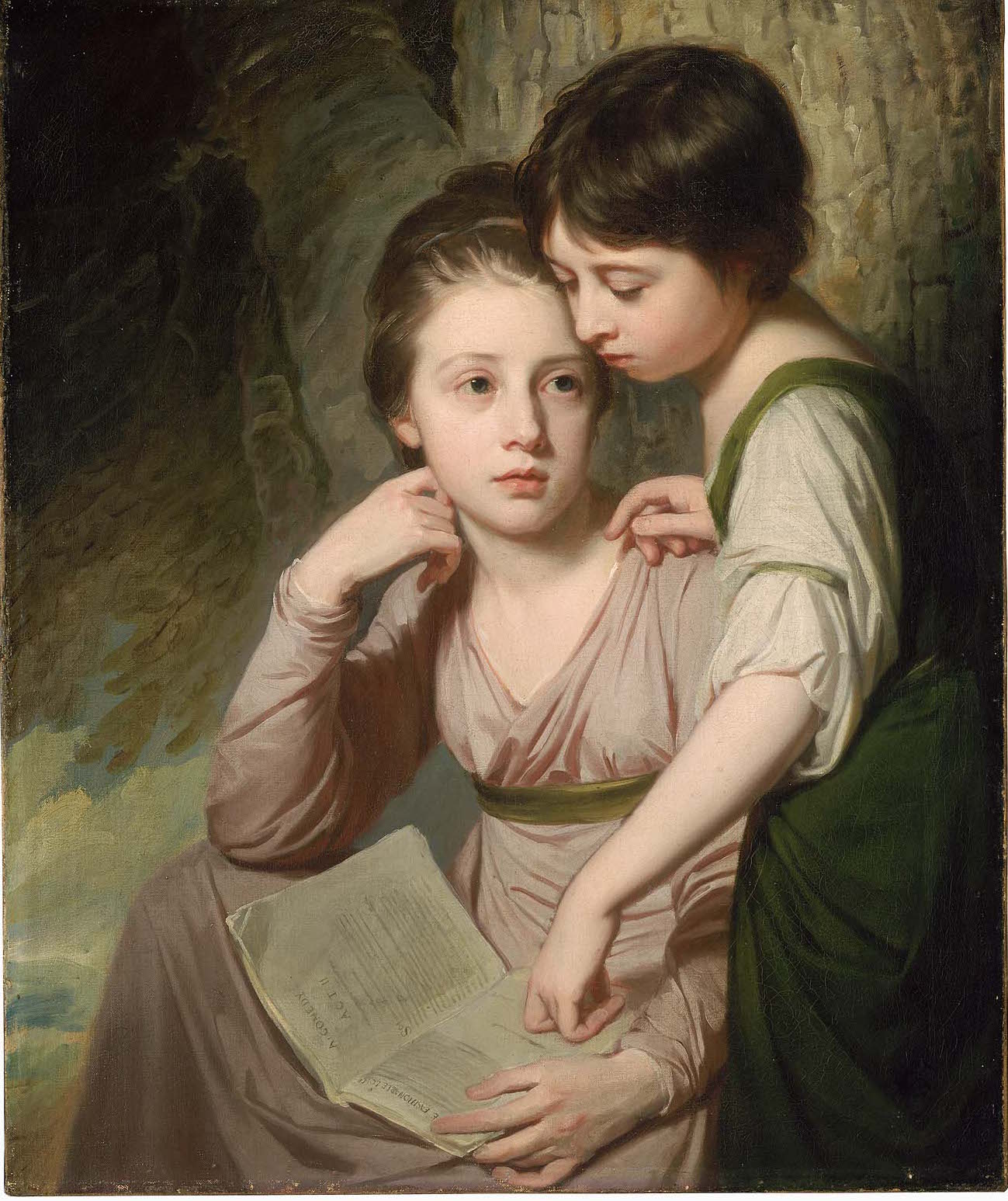
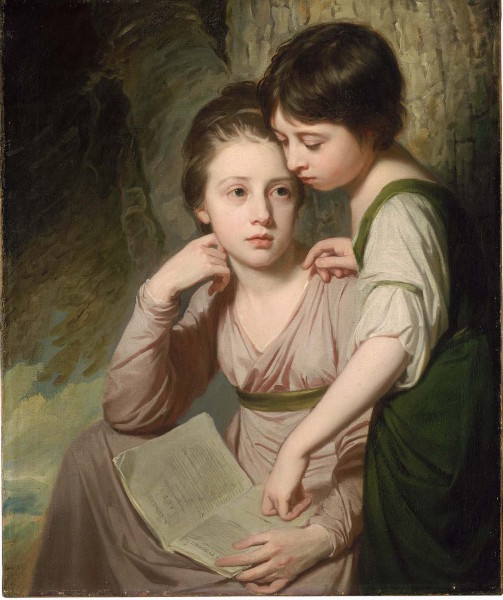
Portrait of Two Girls by George Romney was commissioned by the playwright Richard Cumberland in 1772. His two daughters Elizabeth and Sophia are reading their father’s latest play, The Fashionable Lover. The painting was inherited by Sophia, the younger girl, and stayed in the family until 1892 when her grandson sold it. It is now at the Museum of Fine Arts in Boston. ‘Romney constructs an affectionate and subtle narrative with the sisters’ differing responses. Elizabeth is on the cusp of adolescence and dressed in an “adult” gown: her dreamy stare suggests that the theme of fashionable love has sparked her imagination. Sophia, slim and childish in a green smock, struggles to understand the meaning of her father’s words’ (here). .
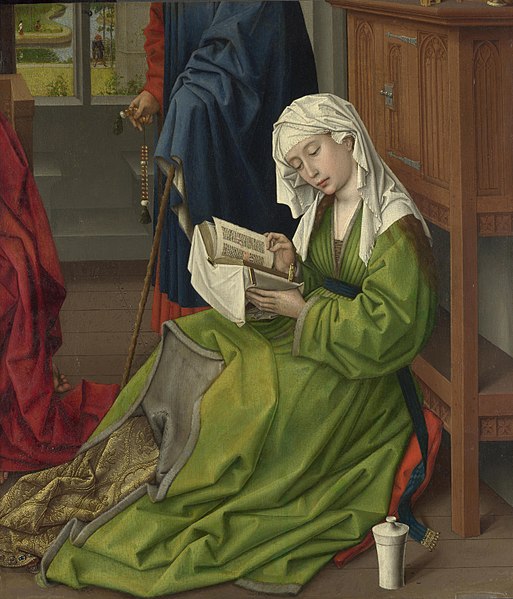

We were given the heavenly Books do Furnish a Painting by Jamie Camplin and Maria Ranauro: ‘Thousands of fine paintings include books in their subject matter. This companionable survey explains how and why books became the single most ubiquitous feature of our cultural lives and, in large measure, of our everyday existence’ (blurb). This is The Magdalena Reading (1438), probably by Rogier van der Weyden, it’s in the National Gallery. But what is the white porcelain object in the bottom right-hand corner? Ah ha, Wikipedia tells us it’s a jar of ointment (among other very interesting info).
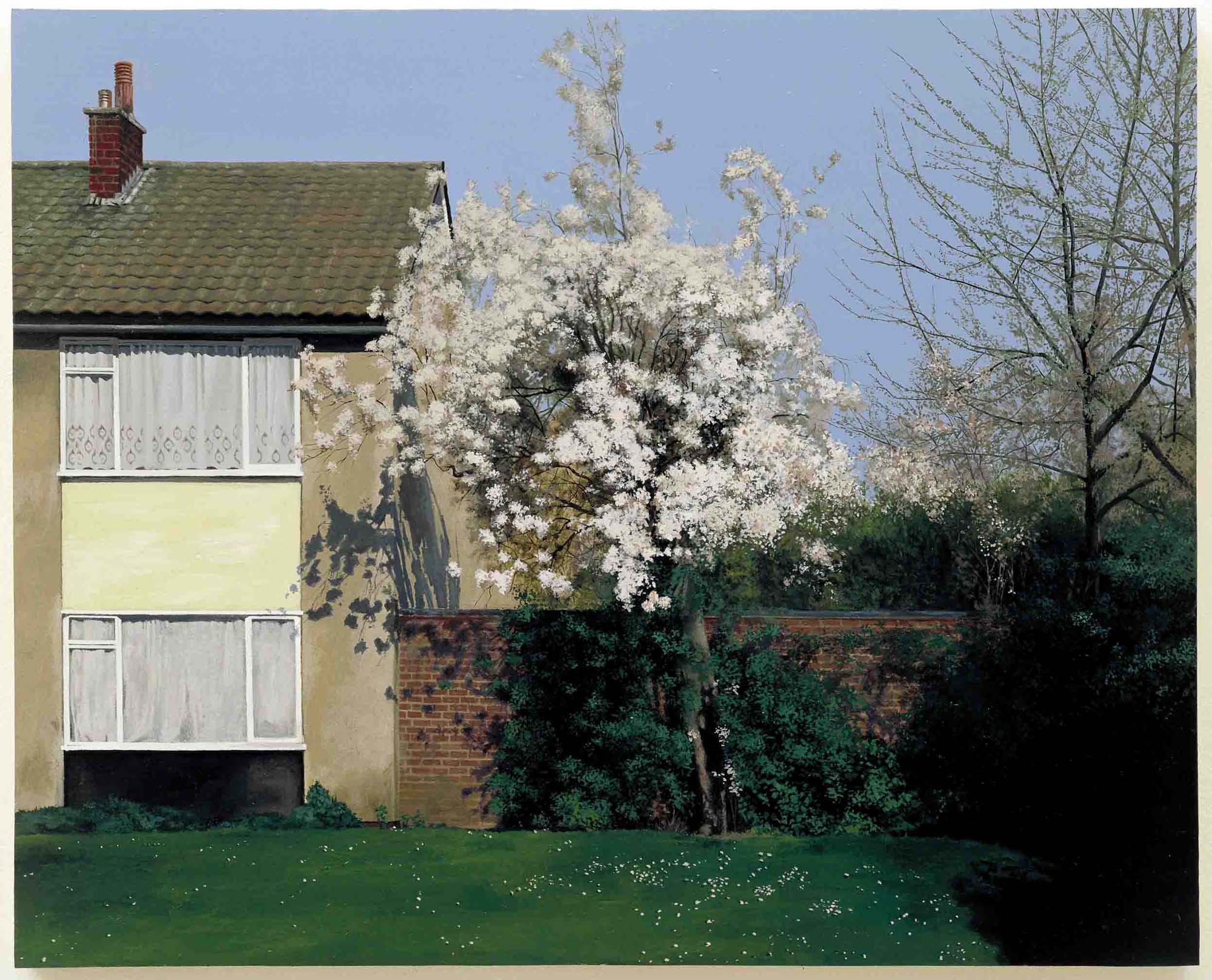
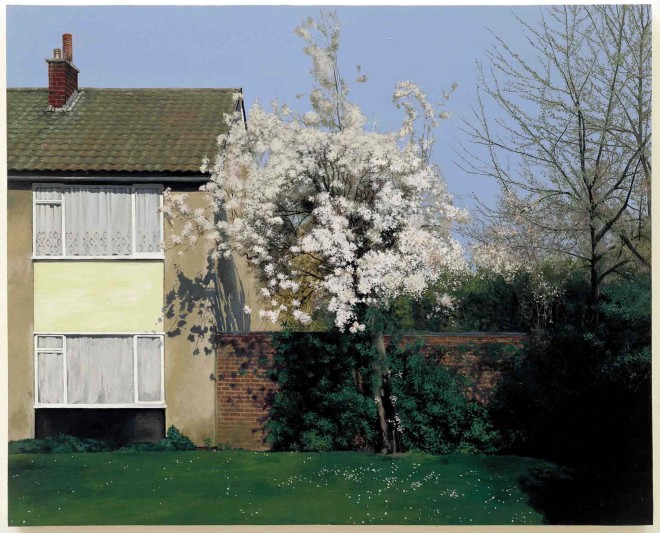
And finally The Blossomiest Blossom 2001 (presumably April of that year, judging by the amazing blossom all around us in the UK at the moment). The British Council website says: ‘The real subject of Shaw’s paintings is the weight of memory. Working meticulously in model-makers enamel, Shaw paints from his snapshots of the places of his childhood. Always empty of people, Shaw’s minutely detailed landscapes trace the artist’s determination to reconstruct not just the look, but the emotional charge of his memories. A far cry from a British landscape tradition in painting, this work does not glorify a rural idyll; instead it draws the viewer into the unremarkable, melancholy spaces between suburb and countryside – a geography familiar to adolescents wandering around the margins of their neighbourhood.’
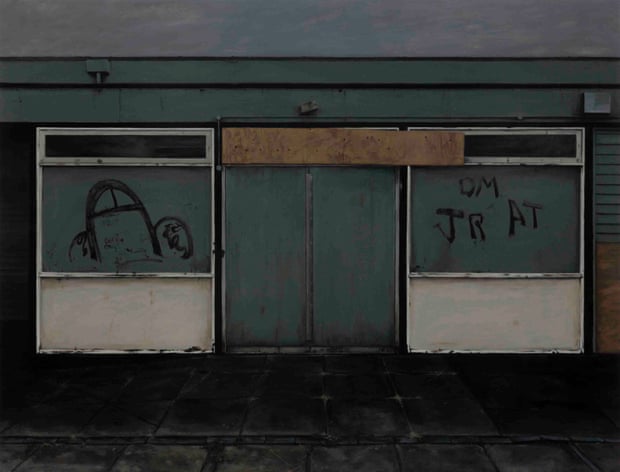

‘The George Shaw exhibition is largely comprised of Shaw’s paintings of Tile Hill, the estate he grew up on that has obsessed him ever since he started painting. The drizzly visions of an empty, everyman England transcend their bleak settings, inviting viewers to project on to them their own childhood ennui. A rope dangling from a tree, a lock-up garage left open, a broken goalpost: each one suggests possible youthful adventures – or traumas. “There’s nothing like them in existence, either in writing or in painting. Certainly not as rich or complex in terms of chronicling a particular kind of place – the British council estate”‘ (curator of the exhibition, in a Guardian piece here). The Back That Used to Be the Front was painted in 2008.
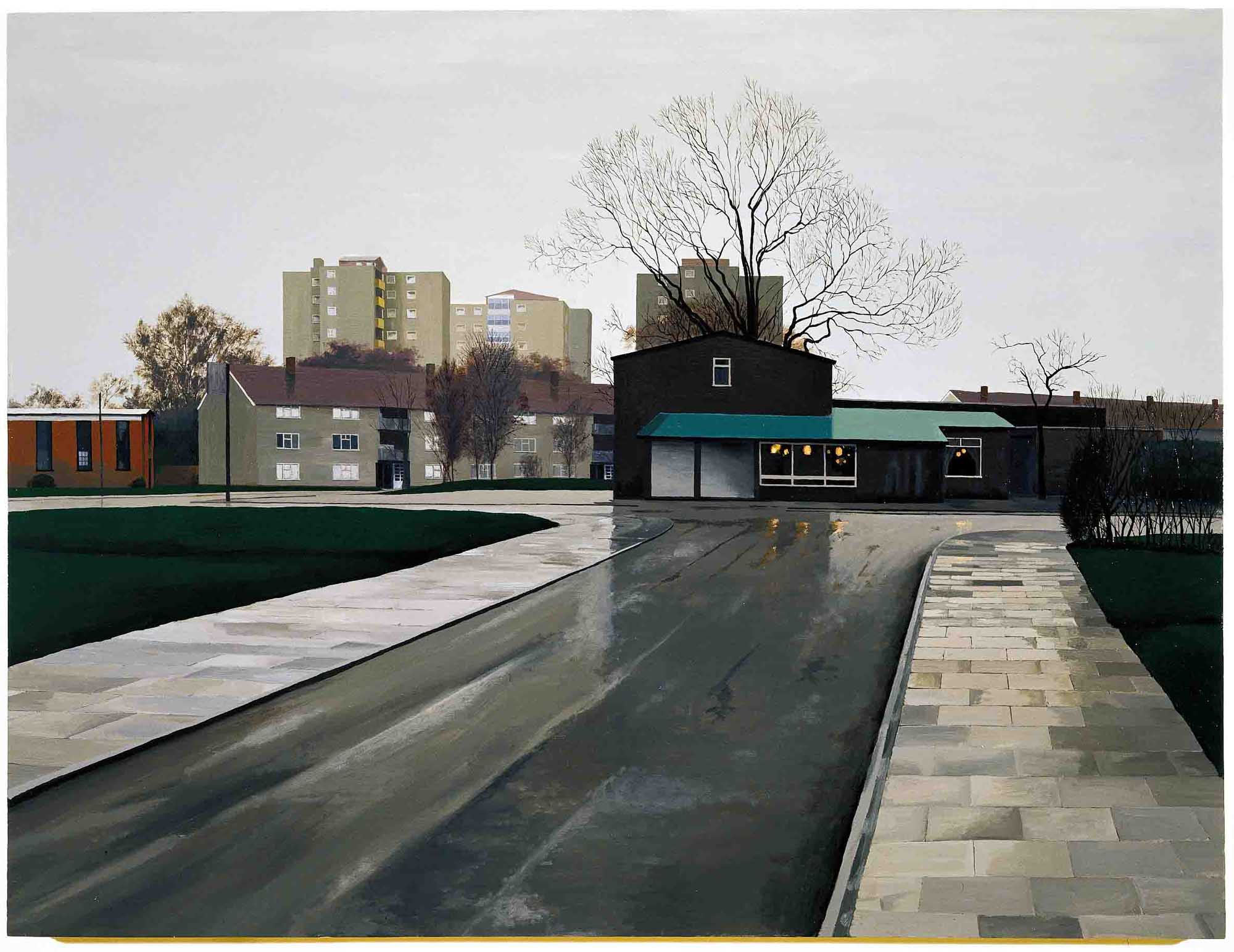
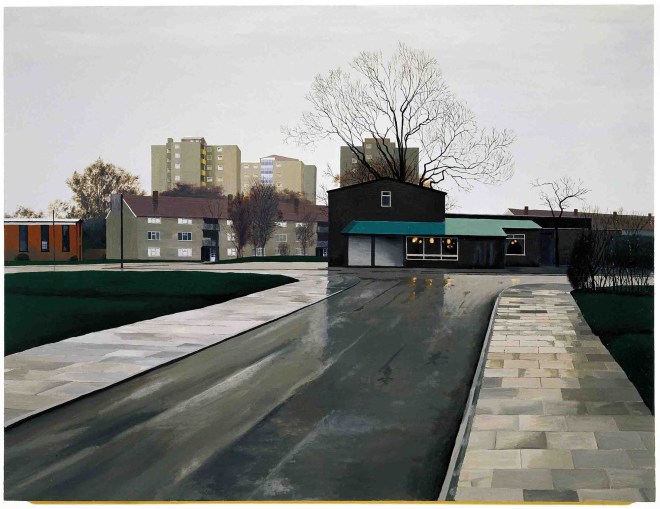 ‘Surprisingly, A Corner of a Foreign Field is the first major retrospective of Shaw’s work, and Bath’s Holburne Museum is the only European venue for the exhibition. It features 20 paintings and 50 drawings that span Shaw’s career from 1996 to the present day, including several new works never previously seen in the UK” (Museum Crush here). This is Scenes from the Passion: The Black Prince, 1999. Lent by Wilkinson Vintners, London.
‘Surprisingly, A Corner of a Foreign Field is the first major retrospective of Shaw’s work, and Bath’s Holburne Museum is the only European venue for the exhibition. It features 20 paintings and 50 drawings that span Shaw’s career from 1996 to the present day, including several new works never previously seen in the UK” (Museum Crush here). This is Scenes from the Passion: The Black Prince, 1999. Lent by Wilkinson Vintners, London.
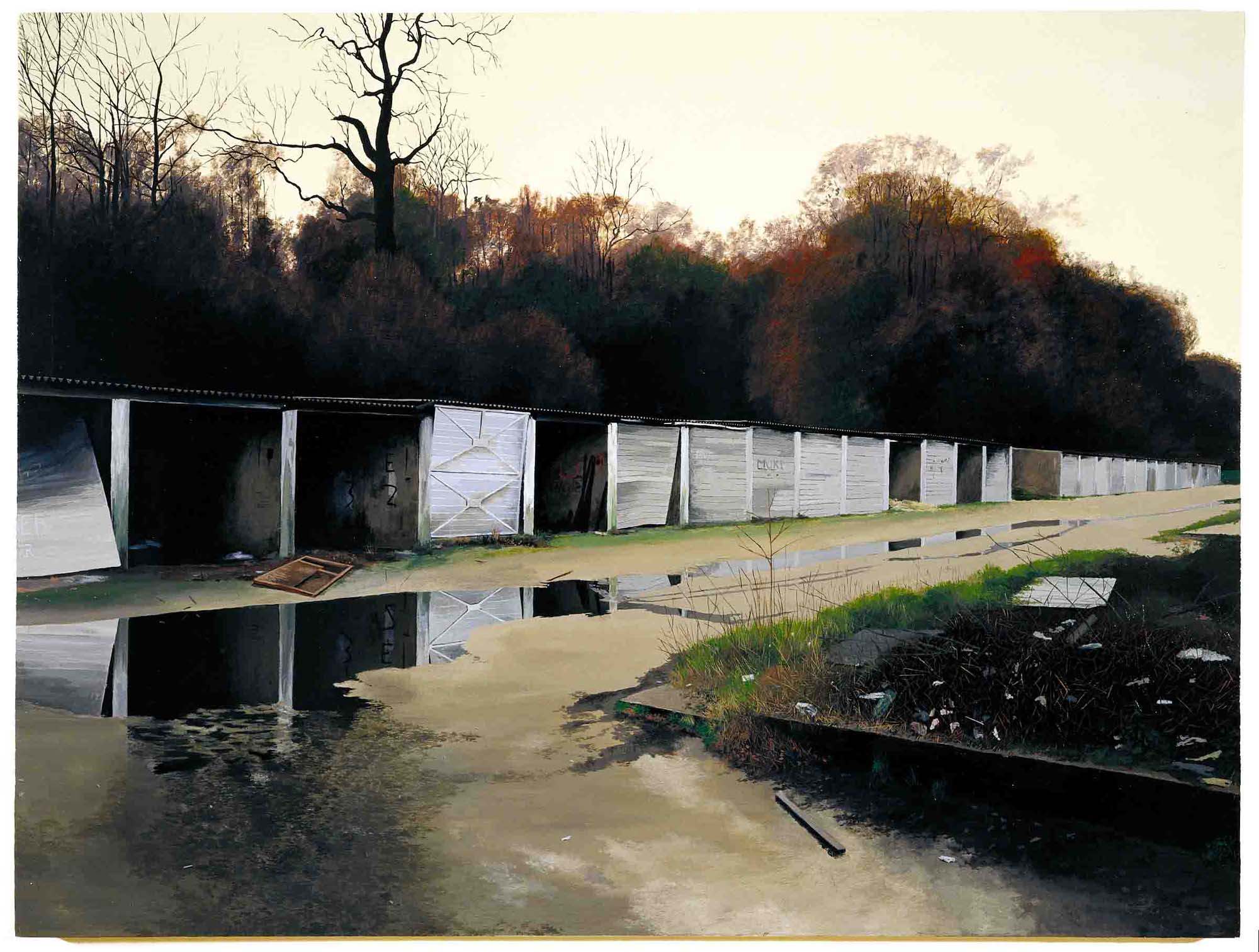
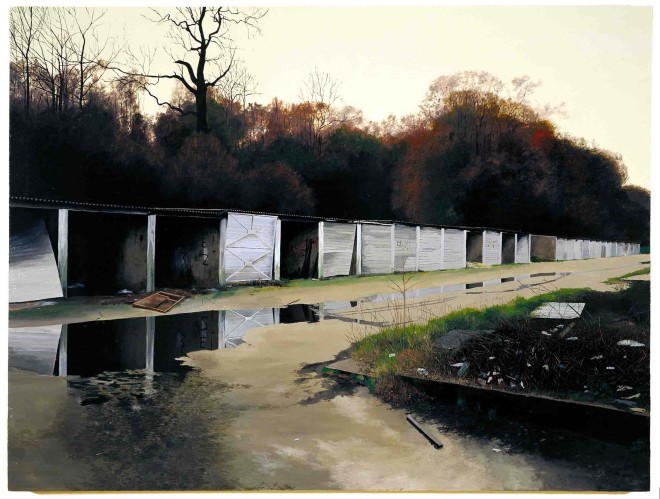 Easter in Bath: and a not-to-be-missed exhibition at the Holburne (on until May 6th) of paintings by George Shaw; in one sense they are domestic, in another they are profoundly political, two aspects of life which are often seen as the antithesis of each other but in ‘our’ writers and in George Shaw’s work are closely entwined. This is Scenes from the Passion: The Fall, 1999. Private Collection.
Easter in Bath: and a not-to-be-missed exhibition at the Holburne (on until May 6th) of paintings by George Shaw; in one sense they are domestic, in another they are profoundly political, two aspects of life which are often seen as the antithesis of each other but in ‘our’ writers and in George Shaw’s work are closely entwined. This is Scenes from the Passion: The Fall, 1999. Private Collection.
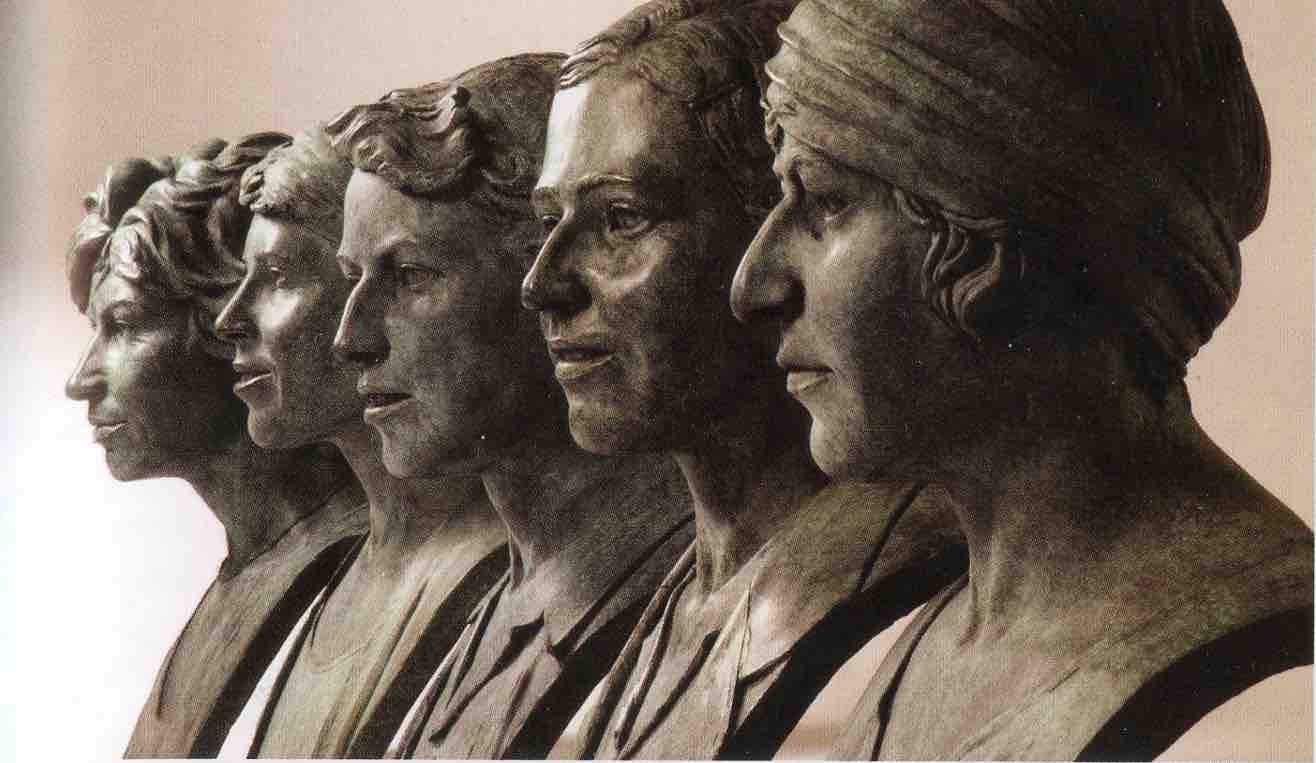
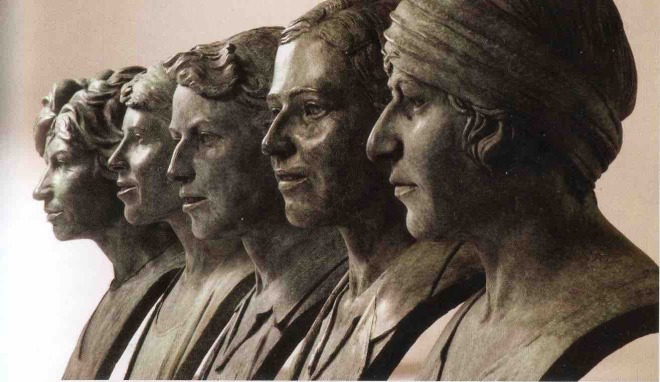
These are the British Ladies Wimbledon Champions designed by sculptor Ian Rank Broadley. They are outside the Club House at Wimbledon: Kitty Godfree, Dorothy Round, Angela Mortimer, Ann Jones and Virginia Wade. Beautifully done: wish we could have more sculptures like this around London. Wishing everyone a wonderful Easter break: lots of sitting in the sun reading a good book while someone else, perhaps, cooks nourishing little meals…

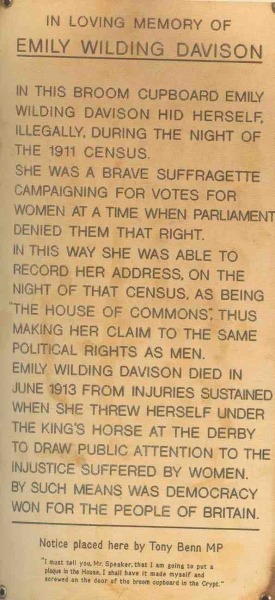
The Women’s London book is full of interesting little details, for example this photograph of the broom cupboard plaque in the House of Commons.. It’s rather moving that it was put on there by Tony Benn and that his son Hilary is now being such a force for good in the Remain campaign. And his wife Caroline wrote some good books about women’s history. Emily Wilding Davison is one of the stars of the film Suffragette (so worth a re-watch). Tomorrow’s Post is the last before Easter, we are closed on Good Friday, open on Saturday (thanks Rose!), closed on Sunday and Monday and we re-open on Tuesday. That is the day the new Biannually starts to arrive and on Thursday the new book are officially published. Our mailing list has been swelled by a thousand readers of the New York Times. Hands across the Ocean indeed, we are so delighted to have them.